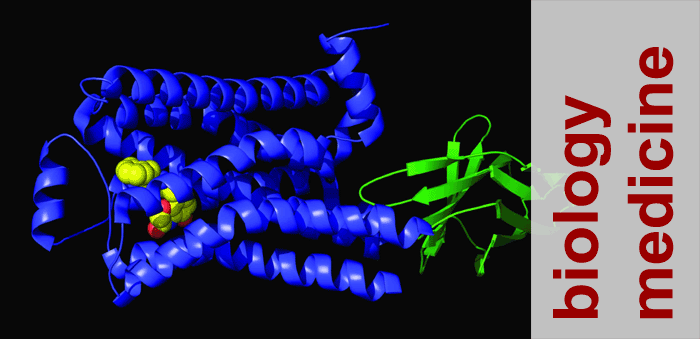
"Our aim is to show how the ability to "see" atoms reveals all the beauty and detail of biological structures, transforming understanding and opening new opportunities in medicine and biotechnology. For classic examples, look no further than the ribosome or the GPCR structures that are now yielding to crystallography."
main editor for biology and medicine
E. N. BakerSchool of Biological Sciences, University of Auckland, Private Bag 92-019, Auckland, New Zealand (e-mail: [email protected])
co-editors
Z.-J. LiuiHuman Institute, ShanghaiTech University, Room 207, Building 6, 99 Haike Road, Pudong New District, Shanghai 201210, China (e-mail: [email protected])
M. MaherSchool of Chemistry, Department of Biochemistry and Pharmacology and Bio21 Institute, The University of Melbourne, 30 Flemington Rd, Parkville Vic 3010, Australia (e-mail: [email protected])
A. McCarthyEuropean Molecular Biology Laboratory, 71, avenue des Martyrs, CS 90181, 38042 Grenoble Cedex 9, France (e-mail: [email protected])
W. MinorDepartment of Molecular Physiology and Biological Physics, University of Virginia, 1340 Jefferson Park Avenue Pinn Hall, Charlottesville, VA 22908-0736, USA (e-mail: [email protected])
J. L. SmithLife Sciences Institute, University of Michigan, 210 Washtenaw Avenue, Ann Arbor, MI 48109-2216, USA (e-mail: [email protected])
A. ThornInstitute for Nanostructure and Solid State Physics, University of Hamburg, Luruper Chaussee 149, Hamburg 22761, Germany (e-mail: [email protected])
articles in this subject area
Damage before destruction? X-ray-induced changes in single-pulse serial femtosecond crystallography. (2025). IUCrJ 12, 358-371.
FLEXR-MSA: electron-density map comparisons of sequence-diverse structures. (2025). IUCrJ 12, 245-254.
Structure of an ex vivo Drosophila TOM complex determined by single-particle cryoEM. (2025). IUCrJ 12, 49-61.
Using multiple computer-predicted structures as molecular replacement models: application to the antiviral mini-protein LCB2. (2025). IUCrJ 12, https://doi.org/10.1107/S2052252525005123.
Using deep-learning predictions reveals a large number of register errors in PDB depositions. (2024). IUCrJ 11, 938-950.
Quantum refinement in real and reciprocal space using the Phenix and ORCA software. (2024). IUCrJ 11, 921-937.
Structure of MltG from Mycobacterium abscessus reveals structural plasticity between composed domains. (2024). IUCrJ 11, 903-909.
CheckMyMetal (CMM): validating metal-binding sites in X-ray and cryo-EM data. (2024). IUCrJ 11, 871-877.
In situ serial crystallography facilitates 96-well plate structural analysis at low symmetry. (2024). IUCrJ 11, 780-791.
The evolution of raw data archiving and the growth of its importance in crystallography. (2024). IUCrJ 11, 464-475.
Crystal structure of human peptidylarginine deiminase type VI (PAD6) provides insights into its inactivity. (2024). IUCrJ 11, 395-404.
Structural insights into the molecular mechanism of phytoplasma immunodominant membrane protein. (2024). IUCrJ 11, 384-394.
Time-series analysis of rhenium(I) organometallic covalent binding to a model protein for drug development. (2024). IUCrJ 11, 359-373.
Structural dissection of two redox proteins from the shipworm symbiont Teredinibacter turnerae. (2024). IUCrJ 11, 260-274.
Crystal structure of vancomycin bound to the resistance determinant D-alanine-D-serine. (2024). IUCrJ 11, 133-139.
Structure and function relationship of formate dehydrogenases: an overview of recent progress. (2023). IUCrJ 10, 544-554.
JINXED: just in time crystallization for easy structure determination of biological macromolecules. (2023). IUCrJ 10, 253-260.
Introduction to the virtual thematic issue on room-temperature biological crystallography. (2023). IUCrJ 10, 248-250.
Structural and biochemical insights into Zn2+-bound EF-hand proteins, EFhd1 and EFhd2. (2023). IUCrJ 10, 233-245.
Comparison of the structure and activity of thioredoxin 2 and thioredoxin 1 from Acinetobacter baumannii. (2023). IUCrJ 10, 147-155.
Slow protein dynamics probed by time-resolved oscillation crystallography at room temperature. (2022). IUCrJ 9, 756-767.
Comparative structural analyses of the NHL domains from the human E3 ligase TRIM–NHL family. (2022). IUCrJ 9, 720-727.
The temperature-dependent conformational ensemble of SARS-CoV-2 main protease (Mpro). (2022). IUCrJ 9, 682-694.
A general method for directly phasing diffraction data from high-solvent-content protein crystals. (2022). IUCrJ 9, 648-665.
Neutron crystallographic analysis of the nucleotide-binding domain of Hsp72 in complex with ADP. (2022). IUCrJ 9, 562-572.
Organism-specific differences in the binding of ketoprofen to serum albumin. (2022). IUCrJ 9, 551-561.
Re-evaluation of protein neutron crystallography with and without X-ray/neutron joint refinement. (2022). IUCrJ 9, 342-348.
Crystal structure of a constitutive active mutant of adenosine A2A receptor. (2022). IUCrJ 9, 333-341.
Trends in coordination of rhenium organometallic complexes in the Protein Data Bank. (2022). IUCrJ 9, 180-193.
Michaelis-like complex of SARS-CoV-2 main protease visualized by room-temperature X-ray crystallography. (2021). IUCrJ 8, 973-979.
Experimental evidence for the benefits of higher X-ray energies for macromolecular crystallography. (2021). IUCrJ 8, 896-904.
Chasing the structural diversity of the transcription regulator Mycobacterium tuberculosis HigA2. (2021). IUCrJ 8, 823-832.
Structural insights into the substrate-binding proteins Mce1A and Mce4A from Mycobacterium tuberculosis. (2021). IUCrJ 8, 757-774.
Fixed-target serial femtosecond crystallography using in cellulo grown microcrystals. (2021). IUCrJ 8, 665-677.
The 3D structure of fibrous material is fully restorable from its X-ray diffraction pattern. (2021). IUCrJ 8, 544-548.
Structural and biophysical aspects of L-asparaginases: a growing family with amazing diversity. (2021). IUCrJ 8, 514-531.
Structural plasticity of the selectivity filter in a nonselective ion channel. (2021). IUCrJ 8, 421-430.
Structural and functional analysis of the Klebsiella pneumoniae MazEF toxin–antitoxin system. (2021). IUCrJ 8, 362-371.
Structural biology in the time of COVID-19: perspectives on methods and milestones. (2021). IUCrJ 8, 335-341.
Comment on the article Structure and mechanism of copper–carbonic anhydrase II: a nitrite reductase. (2021). IUCrJ 8, 327-328.
Theoretical and experimental investigation of protein crystal nucleation in pores and crevices. (2021). IUCrJ 8, 270-280.
Crystallographic models of SARS-CoV-2 3CLpro: in-depth assessment of structure quality and validation. (2021). IUCrJ 8, 238-256.
REGALS: a general method to deconvolve X-ray scattering data from evolving mixtures. (2021). IUCrJ 8, 225-237.
Functionalization of the BCL6 BTB domain into a noncovalent crystallization chaperone. (2021). IUCrJ 8, 154-160.
Crystal structure of death-associated protein kinase 1 in complex with the dietary compound resveratrol. (2021). IUCrJ 8, 131-138.
Molecular-replacement phasing using predicted protein structures from AWSEM-Suite. (2020). IUCrJ 7, 1168-1178.
Experimental phasing with vanadium and application to nucleotide-binding membrane proteins. (2020). IUCrJ 7, 1092-1101.
Molecular determinants of vascular transport of dexamethasone in COVID-19 therapy. (2020). IUCrJ 7, 1048-1058.
An automated platform for in situ serial crystallography at room temperature. (2020). IUCrJ 7, 1009-1018.
The structure of a potassium-selective ion channel reveals a hydrophobic gate regulating ion permeation. (2020). IUCrJ 7, 835-843.
The susceptibility of disulfide bonds towards radiation damage may be explained by S O interactions. (2020). IUCrJ 7, 825-834.
O interactions. (2020). IUCrJ 7, 825-834.
 O interactions. (2020). IUCrJ 7, 825-834.
O interactions. (2020). IUCrJ 7, 825-834. Crystal structures of SARS-CoV-2 ADP-ribose phosphatase: from the apo form to ligand complexes. (2020). IUCrJ 7, 814-824.
Structural insights into the regulation of SigB activity by RsbV and RsbW. (2020). IUCrJ 7, 737-747.
Structural definition of polyspecific compensatory ligand recognition by P-glycoprotein. (2020). IUCrJ 7, 663-672.
Structure-based screening of binding affinities via small-angle X-ray scattering. (2020). IUCrJ 7, 644-655.
Scanning electron microscopy as a method for sample visualization in protein X-ray crystallography. (2020). IUCrJ 7, 500-508.
The achievable resolution for X-ray imaging of cells and other soft biological material. (2020). IUCrJ 7, 393-403.
Visualizing an unseen enemy; mobilizing structural biology to counter COVID-19. (2020). IUCrJ 7, 366-367.
Structure of the MICU1–MICU2 heterodimer provides insights into the gatekeeping threshold shift. (2020). IUCrJ 7, 355-365.
The structural study of mutation-induced inactivation of human muscarinic receptor M4. (2020). IUCrJ 7, 294-305.
Structure and mechanism of copper–carbonic anhydrase II: a nitrite reductase. (2020). IUCrJ 7, 287-293.
Toward G protein-coupled receptor structure-based drug design using X-ray lasers. (2019). IUCrJ 6, 1106-1119.
Resolution and dose dependence of radiation damage in biomolecular systems. (2019). IUCrJ 6, 1040-1053.
The DRS–AIMP2–EPRS subcomplex acts as a pivot in the multi-tRNA synthetase complex. (2019). IUCrJ 6, 958-967.
Ligand pathways in neuroglobin revealed by low-temperature photodissociation and docking experiments. (2019). IUCrJ 6, 832-842.
Structures of three ependymin-related proteins suggest their function as a hydrophobic molecule binder. (2019). IUCrJ 6, 729-739.
On-chip crystallization for serial crystallography experiments and on-chip ligand-binding studies. (2019). IUCrJ 6, 714-728.
Conservation of the structure and function of bacterial tryptophan synthases. (2019). IUCrJ 6, 649-664.
Room-temperature photo-induced martensitic transformation in a protein crystal. (2019). IUCrJ 6, 619-629.
Dose-resolved serial synchrotron and XFEL structures of radiation-sensitive metalloproteins. (2019). IUCrJ 6, 543-551.
Determination of the molecular basis for coprogen import by Gram-negative bacteria. (2019). IUCrJ 6, 401-411.
Structure of mammalian plasma fetuin-B and its mechanism of selective metallopeptidase inhibition. (2019). IUCrJ 6, 317-330.
Rigid-body motion is the main source of diffuse scattering in protein crystallography. (2019). IUCrJ 6, 277-289.
The expanding toolkit for structural biology: synchrotrons, X-ray lasers and cryoEM. (2019). IUCrJ 6, 167-177.
Photocage-initiated time-resolved solution X-ray scattering investigation of protein dimerization. (2018). IUCrJ 5, 667-672.
Homology-based loop modeling yields more complete crystallographic protein structures. (2018). IUCrJ 5, 585-594.
Dummy-atom modelling of stacked and helical nanostructures from solution scattering data. (2018). IUCrJ 5, 390-401.
Enzyme catalysis captured using multiple structures from one crystal at varying temperatures. (2018). IUCrJ 5, 283-292.
Epoxide hydrolysis as a model system for understanding flux through a branched reaction scheme. (2018). IUCrJ 5, 269-282.
Sample manipulation and data assembly for robust microcrystal synchrotron crystallography. (2018). IUCrJ 5, 238-246.
Intermolecular correlations are necessary to explain diffuse scattering from protein crystals. (2018). IUCrJ 5, 211-222.
Internal protein motions in molecular-dynamics simulations of Bragg and diffuse X-ray scattering. (2018). IUCrJ 5, 172-181.
Active-site solvent replenishment observed during human carbonic anhydrase II catalysis. (2018). IUCrJ 5, 93-102.
Lifetimes and spatio-temporal response of protein crystals in intense X-ray microbeams. (2017). IUCrJ 4, 785-794.
A distance geometry-based description and validation of protein main-chain conformation. (2017). IUCrJ 4, 657-670.
Progress in small-angle scattering from biological solutions at high-brilliance synchrotrons. (2017). IUCrJ 4, 518-528.
What macromolecular crystallogenesis tells us – what is needed in the future. (2017). IUCrJ 4, 340-349.
Crystallographic and SAXS studies of S-adenosyl-L-homocysteine hydrolase from Bradyrhizobium elkanii. (2017). IUCrJ 4, 271-282.
The mechanism behind the selection of two different cleavage sites in NAG-NAM polymers. (2017). IUCrJ 4, 185-198.
Procedures for cryogenic X-ray ptychographic imaging of biological samples. (2017). IUCrJ 4, 147-151.
Advances in mass spectrometry based strategies to study receptor tyrosine kinases. (2017). IUCrJ 4, 119-130.
Structures of C-mannosylated anti-adhesives bound to the type 1 fimbrial FimH adhesin. (2016). IUCrJ 3, 163-167.
In cellulo serial crystallography of alcohol oxidase crystals inside yeast cells. (2016). IUCrJ 3, 88-95.
Rapid experimental SAD phasing and hot-spot identification with halogenated fragments. (2016). IUCrJ 3, 51-60.
Changes in protein structure at the interface accompanying complex formation. (2015). IUCrJ 2, 643-652.
Serial femtosecond crystallography of soluble proteins in lipidic cubic phase. (2015). IUCrJ 2, 545-551.
Human insulin polymorphism upon ligand binding and pH variation: the case of 4-ethylresorcinol. (2015). IUCrJ 2, 534-544.
Structural studies of P-type ATPase–ligand complexes using an X-ray free-electron laser. (2015). IUCrJ 2, 409-420.
Integral membrane proteins and free electron lasers – a compatible couple indeed!. (2015). IUCrJ 2, 387-388.
Synchrotron radiation macromolecular crystallography: science and spin-offs. (2015). IUCrJ 2, 283-291.
Structure of a 13-fold superhelix (almost) determined from first principles. (2015). IUCrJ 2, 177-187.
Lipidic cubic phase serial millisecond crystallography using synchrotron radiation. (2015). IUCrJ 2, 168-176.
Macromolecular ab initio phasing enforcing secondary and tertiary structure. (2015). IUCrJ 2, 95-105.
In-depth analysis of subclass-specific conformational preferences of IgG antibodies. (2015). IUCrJ 2, 9-18.
Structure and function of dioxygenases in histone demethylation and DNA/RNA demethylation. (2014). IUCrJ 1, 540-549.
Investigating increasingly complex macromolecular systems with small-angle X-ray scattering. (2014). IUCrJ 1, 523-529.
Reconciling the regulatory role of Munc18 proteins in SNARE-complex assembly. (2014). IUCrJ 1, 505-513.
Structure and function study of the complex that synthesizes S-adenosylmethionine. (2014). IUCrJ 1, 240-249.
Avoidable errors in deposited macromolecular structures: an impediment to efficient data mining. (2014). IUCrJ 1, 179-193.
Structural insight into activity enhancement and inhibition of H64A carbonic anhydrase II by imidazoles. (2014). IUCrJ 1, 129-135.
Serial crystallography on in vivo grown microcrystals using synchrotron radiation. (2014). IUCrJ 1, 87-94.


 journal menu
journal menu










